General Information
- Breed Purpose
- Ornamental
- Comb
- Single
- Broodiness
- Average
- Climate Tolerance
- All Climates
- Egg Productivity
- Medium
- Egg Size
- Small
- Egg Color
- White
- Breed Temperament
- Bears confinement well,Noisy,Calm
- Breed Colors/Varieties
- There are several recognized colors of the Japanese Bantam, such as Black, Black or Blue Tailed white, White, Blue, Black Tailed Buff, Buff Columbian, Birchen or Grey, Cuckoo. Frizzles of any color, Mottleds (Black, Blue),Brown/reds, Black/red, Wheatan, Partridge, Duckwing Gold or silver, and Blue reds.
- Breed Size
- Bantam
- APA/ABA Class
- Single Comb Clean Leg
Japanese Bantams are a tiny breed of chicken known for their extremely short legs, large combs and graceful, arched tails. The wings of a Japanese bantam will touch the ground as it walks. This breed originated in Southeast Asia and were kept by Japanese aristocrats and affluent fanciers of poultry as ornamental garden fowl as their beauty far surpassed their egg production. They are appreciated in gardens still as their tiny feet do little damage. A wonderful show bird, these tiny birds require little feed and space but put on a big show. The Black Tailed White Japanese Bantam was recognized by the American Poultry Standard of Perfection in 1874 and have maintained a strong presence in the show circuit ever since.
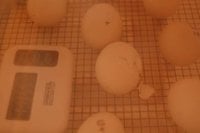
Japanese Bantam eggs
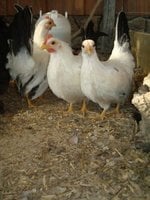
Japanese Bantam hens
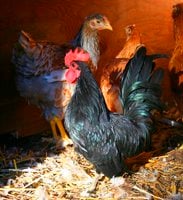
Japanese Bantam rooster

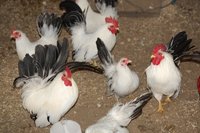
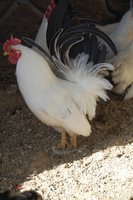
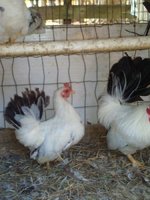







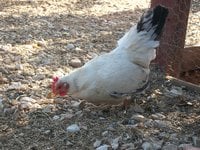
 They are decent mothers, but one of them would peck at the chicks until she got used to them. I had another hen that was broody, and my japanese hen killed one of her chicks. They aren't an outstanding breed so I definitely wouldn't get again.
They are decent mothers, but one of them would peck at the chicks until she got used to them. I had another hen that was broody, and my japanese hen killed one of her chicks. They aren't an outstanding breed so I definitely wouldn't get again.